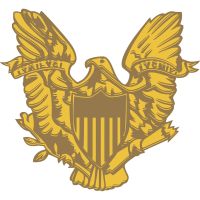Precious metal finds in England to be displayed to public
Fifty-nine year-old Englishman George McKean has an uncanny ability to unearth precious metals.
Nearly three decades after having found 41 gold coins, one silver coin and a gold ring with his brother-in-law, McKean found a medieval gold ring and a silver coin - in the same location, located north of Birmingham, The Leader reports. Known as the "Huntington Hoard," what McKean unearthed in 1986 has been on display at the Grosvenor Museum in Chester ever since. That's also where his recent find is likely to be on display as well.
While using a very sensitive metal detector in Huntington on the estate of the Duke of Westminster, McKean – who also is chair of the Historical Search Society – found the precious metals that he wants on display for others to enjoy as well.
"I'm very excited about it. I'm not in it for the money, it's the finding of it and the recording of it and having it put into the museum. That is what it is all about."
The Daily Mail reports the gold ring features an engraving of the patron saint of travel St. Christopher carrying the child Jesus. The silver coin is tracked as far back as the 1420s, when King Henry VI ruled the land.
Dr. Barry Cooke, medieval and early modern coinage curator at the British Museum coins and medals department, penned a treasure report. Excerpts of that report were recited during a hearing conducted by Michael Wallbank, Cheshire's assistant deputy coroner.
"This is a medieval finger ring iconographic in type with a rectangular vessel engraved with an image of St Christopher supporting the Christ child on his shoulder," the report states.
"St. Christopher carries a staff in his right hand and then clutches his cloak around his body with his left. He gazes up at Christ who raises his right hand in blessing. St Christopher, the Patron Saint of travelers, was invoked against sudden death. The shoulders of the ring taper into a slim band which are engraved with flowers. The flowers on the right side contain a portion of white enamel."
Measuring 20 millimeters, the ring is believed to be from sometime between the 15th or early 16th century.
The ring is considered treasure because of its age and since it consists of at least 10 percent precious metal, the inquest was told.
Regarding the coin that was found near the ring, it also is of precious metal.
"The coin found in close proximity to the ring is a silver groat that has over 90 per cent fine metal and it is a Henry VI angullette issue dating to the 1420s," the report states. "Both the ring and the coin will be entirely consistent with these items forming to the 1986 Huntington treasure trove."
The coroner of Central Hampshire declared another gold relic recently unearthed as treasure, the Romsey Advertiser reports.
Found this past November in Eastern England, a gold ring dating from the bronze age was dug up by Ian Laws, who was searching with his metal detector at Barton House Farm in Alresford. It is believed to date from some time between 1150 and 750 before the common era.
The owner of Barton House Farm granted permission for Laws' metal detector club to scan the property. Graham Lailey opined that the ring is the first to have been found on the grounds.
"I do not think anything previously has been found there at all," he told the news source.
Central Hampshire Coroner Grahame Short declared the ring as treasure at an inquest conducted earlier this month. A liaison officer with the Winchester Museum Service said that museum will likely want to purchase it and it will be assessed by the British Museum.









